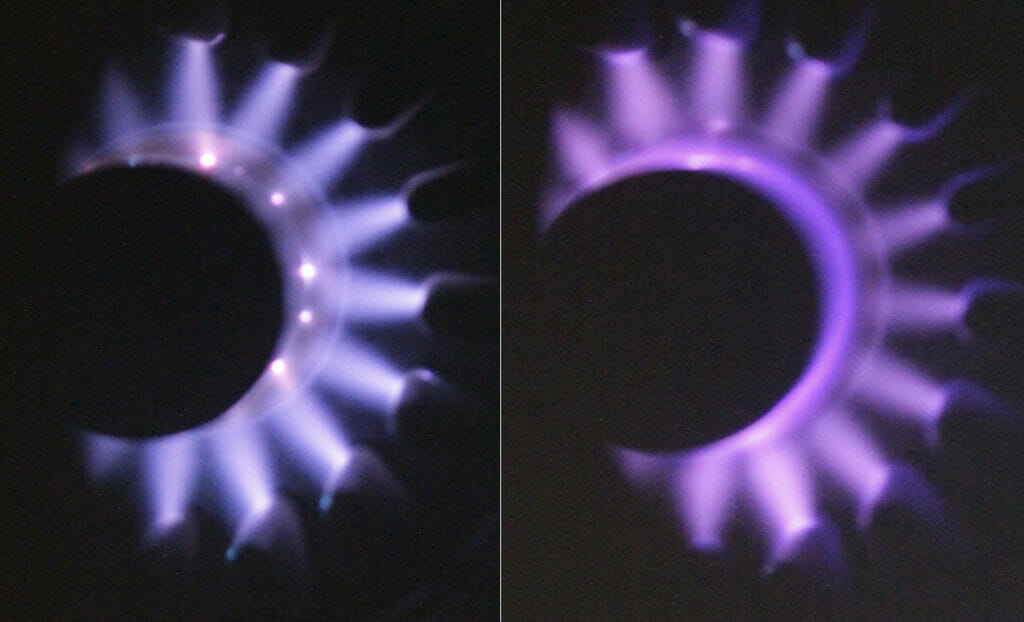The LPPFusion team is getting closer to firing our FF-2B experimental fusion device with hydrogen-boron fuel (also called pB11) but we’re not quite there yet. We’re moving forward along two paths. First, Research Scientist Dr. Syed Hassan is continuing to upgrade our device to hydrogen-boron operation. He’s completed the many steps needed to get total remote functioning, so that we can stay in the control room all day while firing the device in the next-door X-room (X for experimental). While the main fusion reaction produces no radioactivity, a side reaction produces the very short-lived radioactive isotope carbon-11. So, we have to stay out of the X-room until the carbon-11 decays away overnight. In the control room, we have the meter of concrete that surrounds the X-room shielding us from any radiation.
With this task done, Dr. Hassan is working on the exhaust system that will ensure only pure hydrogen is released to the facility roof. He’s also upgrading the device heating system that is needed to warm up our decaborane powder (the hydrogen-boron compound we will use) so it produces the vapor we need to fill the vacuum chamber where the fusion takes place.
On the other path, Chief Scientist Eric Lerner is continuing work to produce a symmetrical breakdown when we fire FF-2B with hydrogen boron. Breakdown is when a gas turns into a plasma that can carry electricity. This process needs to be symmetric around our cylindrical anode so that we will get symmetrical compression of the plasma into a high density, high temperature plasmoid. That’s what’s needed to burn the hydrogen-boron at billions of degrees.
Using a combination of a glow discharge current, to get the breakdown started, and a mixing gas to help stabilize the current, we’ve made progress here too. The right image shows the much better symmetry we’ve achieved and the left image shows where we started out in July. Back then, nearly all the current was concentrated in the bright spots while now it is nearly all evenly spread into the pink ring. The change in color is due to the mixing gas.

We started in July (left) with a very unsymmetric breakdown, with the current focused in the bright spots. Now (right) the breakdown is more symmetric, with the current mostly spread out in the pink ring and just a little in the two bright spots. The anode (central black region) looks oval in the right-hand image because the current is concentrated in a thin sheath while in the left-hand image, it spreads out up the side of the anode. Change in color is due to the addition of a mixing gas.
We’re not where we need to be yet. For one thing, we still need to get rid of a few tiny specks of metal to get rid of the remaining bright spots and get perfect symmetry. More critically, we don’t get the near-symmetrical discharges every time. It’s more like one in three.
Since the breakdown process of stripping electrons from the atoms is sufficiently complex it is hard to predict with equations, we need to do more trial and error to get the best and most repeatable conditions –we’ve done 300 tests already since July. Fortunately, we are using our trigger system, not the main capacitor bank, for these tests. So, we can do them quickly and we expect to get to the goal soon.
